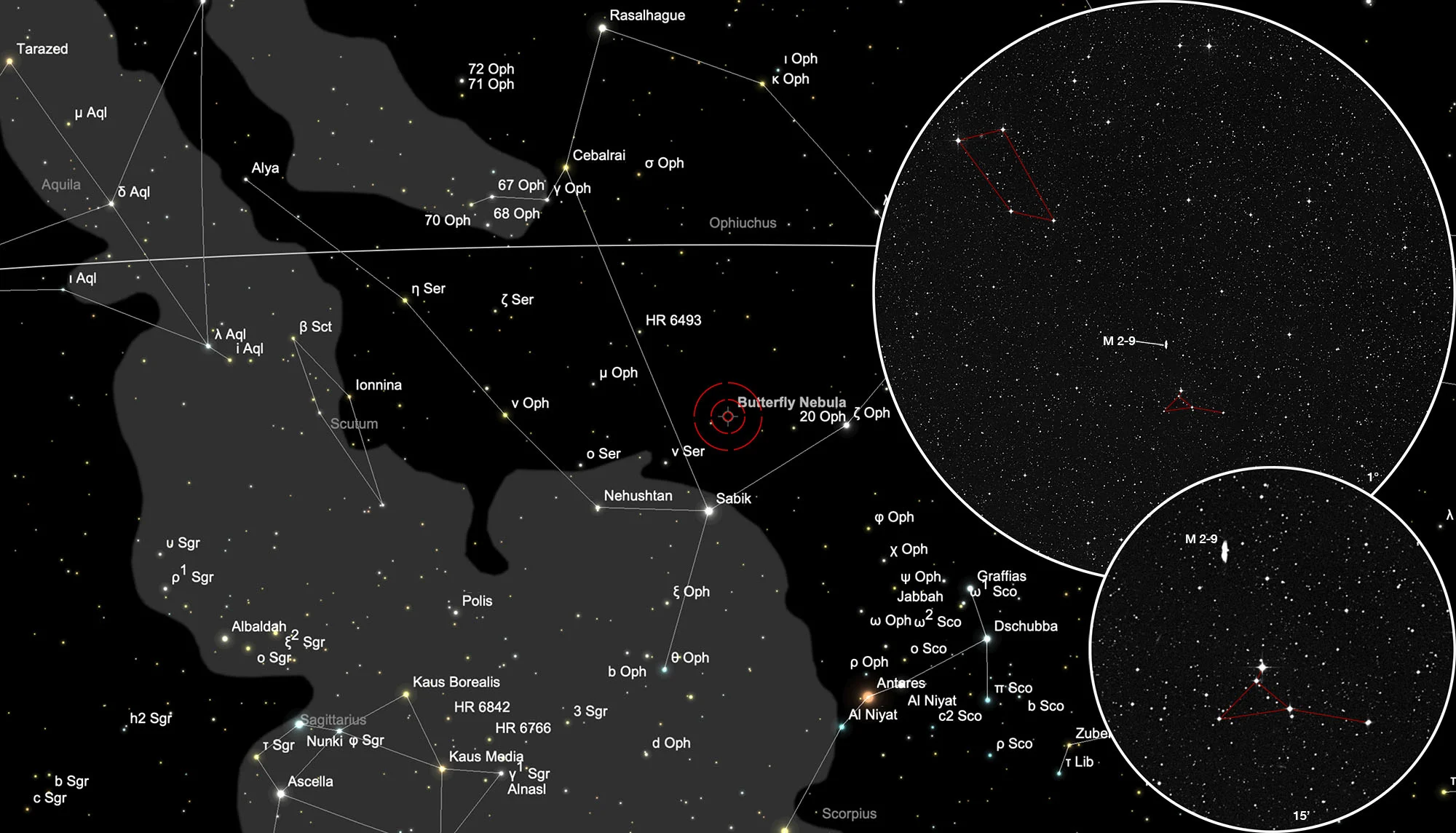Twin Jet Nebula, Minkowski's Butterfly (Minkowski 2-9)

History
The planetary nebula was discovered in 1947 by the German-American astronomer Rudolph Minkowski. He detected objects with little or no continuous H-α spectrum on objective-prism survey plates obtained by W. C. Miller using the 10-inch telescope at Mount Wilson. Further examination of its appearance on direct photographs, taken at the Newtonian focus of the 60-inch or 100-inch telescope on Mount Wilson, revealed its nature as a planetary nebula. [397, 454]
Minkowski 2-9 (M 2-9) is known under various nicknames: «Minkowski's Butterfly», «Twin Jet Nebula», the «Wings of a Butterfly Nebula», or just «Butterfly Nebula». As the names can be confused with the planetary nebulae NGC 2346 and NGC 6302, which are also known as «Butterfly Nebula», we prefer «Twin Jet Nebula». This also matches the impression of the extraordinary image by HST (see Fig. 1)
Physical Properties

M 2-9 is a bipolar pre-planetary nebulae and has a binary central star. Both stars have around the same mass as the sun, ranging from 0.6 to 1.0 solar masses for the smaller star, and from 1.0 to 1.4 solar masses for its larger companion. As the larger star is approaching the end of its days, it has begun ejecting its outer layers of gas into space about 1200 years ago. Its partner is further evolved, and is already a small white dwarf.
The two stars circle one another around their common centre of mass roughly every 100 years. The ejected gas from the dying star is pulled into two lobes. Inside these lobes are violent twin jets streaming out into space, at speeds in excess of one million kilometers per hour. These jets slowly change their orientation, precessing across the lobes as they are directed by the wayward motions of the binary system. Changes are noticeable within few years. (see Fig. 2). [495]
The rotation of the binary stars not only creates the wings of the butterfly and the two jets, it also allows the white dwarf to strip gas from its larger companion, which then forms a large disc of material around the stars, extending out as far as 15 times the orbit of Pluto! Even though this disk is of incredible size, it is much too small to be seen on the image on Fig. 1. The distance is estimated around 1.3 kpc. [493, 494] Apparent brightness: B 12.59 mag, V 14.7 mag. [145]
| Designations | PN G010.8+18.0: M 2- 9, PK 10+18.2, MHa 362- 8, VV 92, VV' 161 |
| Right Ascension (J2000.0) | 17h 05m 38s |
| Declination (J2000.0) | -10° 08' 32" |
| Dimensions | 17.2" (optical), 46." (radio) |
| Radial Velocity | +88.0 ± 2.3 km/s |
| Expansion Velocity | 31. (O-III) km/s |
| C-Star Designations | AG82 227 |
| C-Star Magnitude | B: 16.29, V: 15.65 |
| C-Star Spectral Type | Descr. |
| Discoverer | MINKOWSKI 1947 |
Finder Chart
The planetary nebula Minkowski 2-9 is located in the constellation Ophiuchus, which is actually more known for globular clusters. The best observation time is in the months of February to November.
Visual Observation
400 mm Aperture: It takes a while to identify star patterns with the large-field eyepiece, which can be used for orientation. In the 11 mm DeLite eyepiece (163x) the Proto-PN reveals itself as a faint elongated nebula in north-south direction, which can be clearly identified with indirect vision. An O-III unfortunately makes both nebulae and the fine stars, which serve orientation, disappear. — 400 mm f/4.5 Taurus Dobsonian, Glaubenberg, SQM 21.34, a bit windy, Sahara dust and hazy, 22. 5. 2022, Bernd Nies
